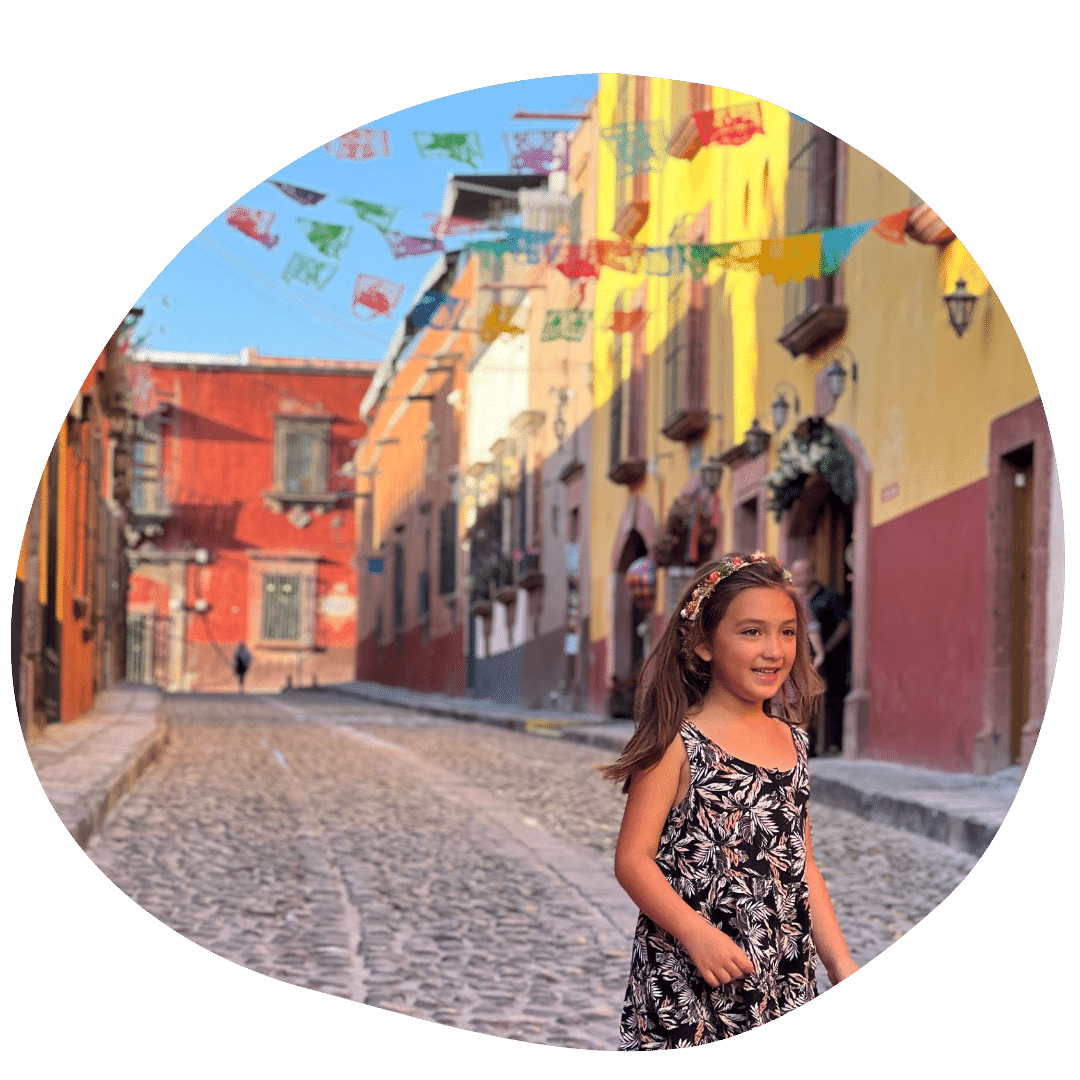
10 Interesting Family Fun Things to do in Mexico
We’re sharing some fun places and facts that will take you to many different United Mexican States for a trip with your family that will be remembered for a lifetime. Mexico has a vibrant culture, a rich history, and world-class food to enjoy.
saltyvagabonds
Destinations
Travel Tips
Planning
About us
Saltyvagabonds
If you click on links we provide, we may receive compensation.
Mexico is a super family-friendly country with many unique experiences to offer your family. We’re sharing some things we loved doing in Mexico that we know you’ll enjoy too!
The Historic Town of Guanajuato and Adjacent Mines UNESCO site
The entire town is a UNESCO site because of its architecture and history are everywhere! This town was developed during the 16th century from the spanish conquistadors. During the 18th century the town developed during the extraction of silver in the adjacent area filled with mines.
The town of Guanajuato features a subterraneous tunnel street system, cobblestone streets and narrow pathways to reach homes and restaurants. The Mexican cuisine here in the city is unparalleled with other Central Mexico eateries. The Mexican food we ate here was top-notch and some of the best we enjoyed in the United States of Mexico.
The city is full of Mexican culture. You can expect to see the streets lined with Mexican children and families during supper time. The plazas are full of families buying street food and trinkets with the Mexican peso.
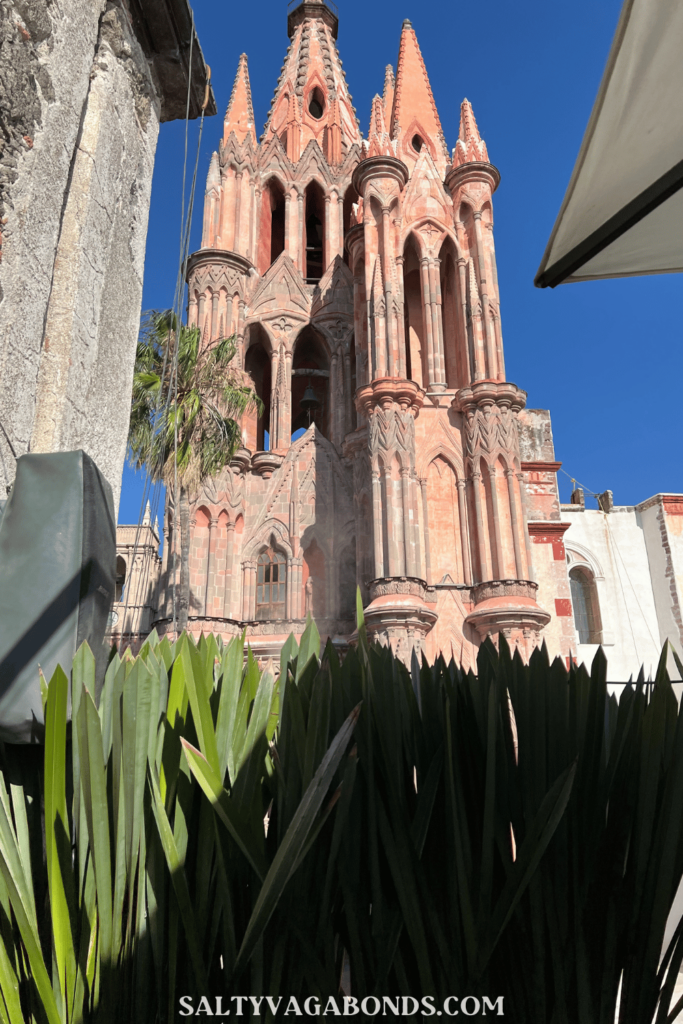
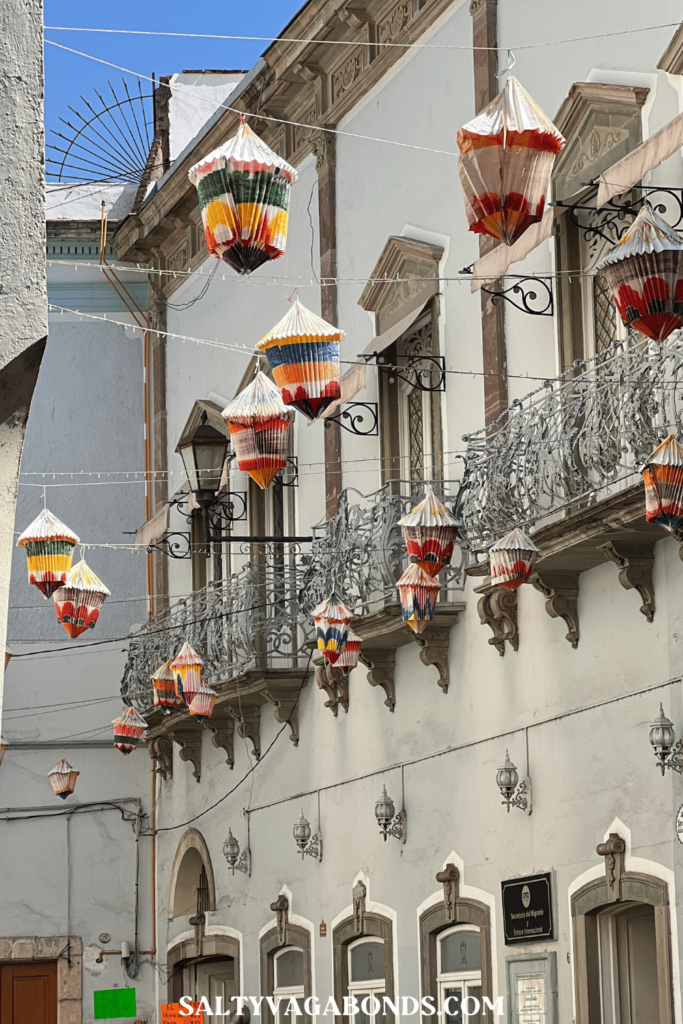
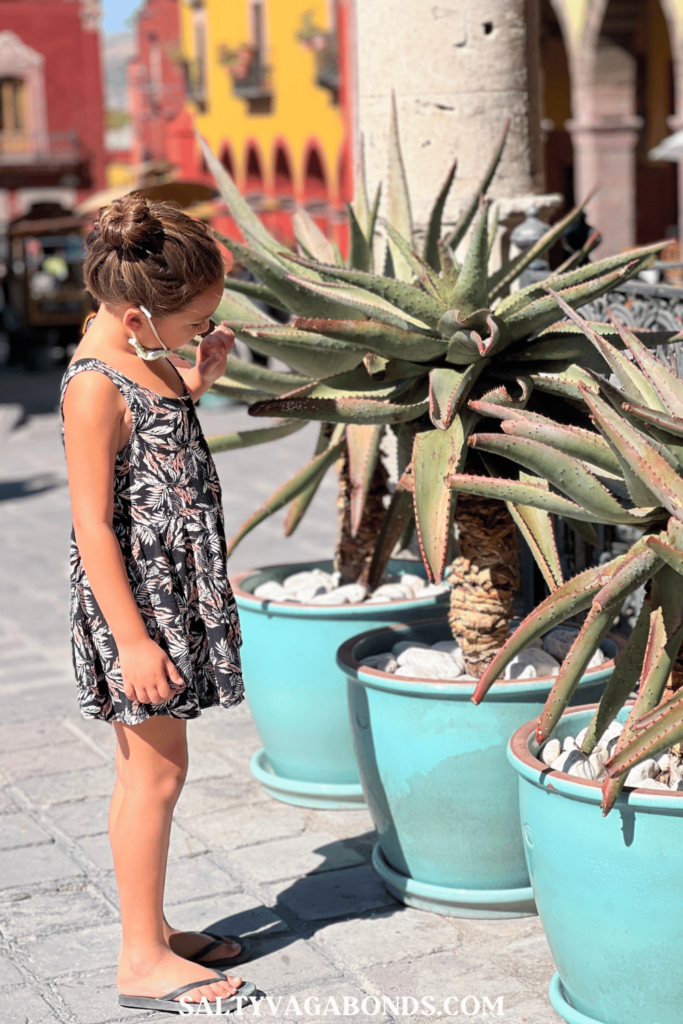
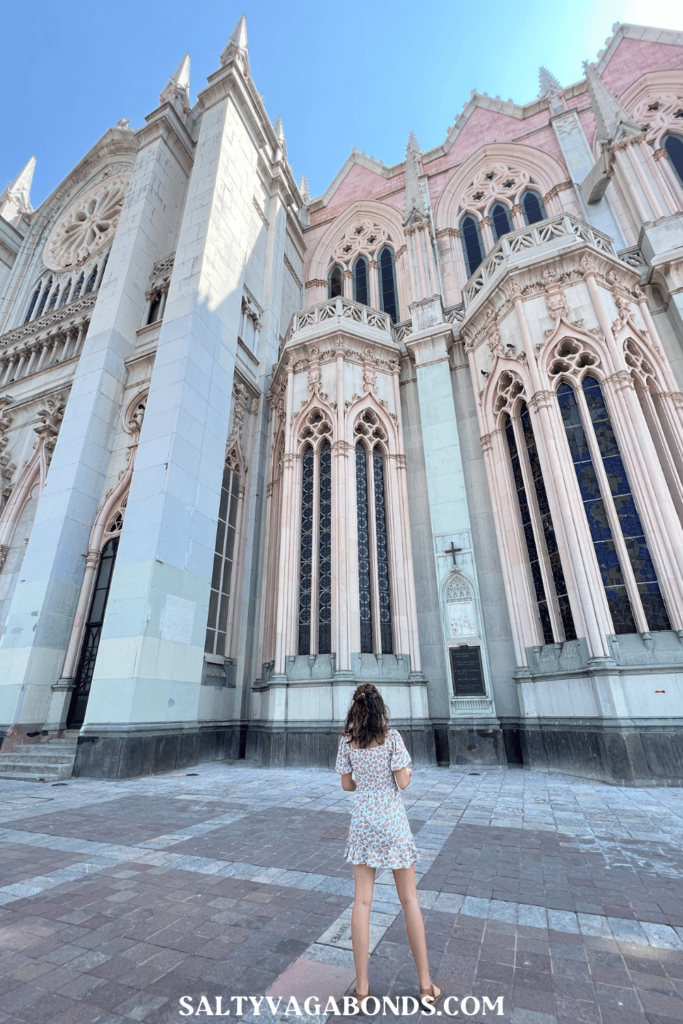
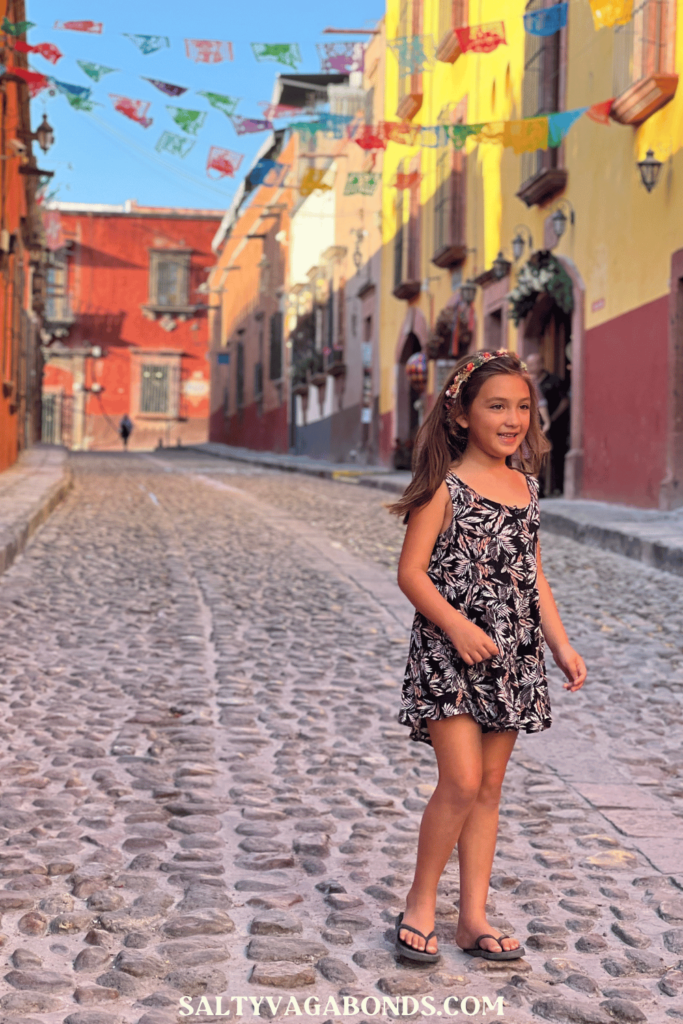
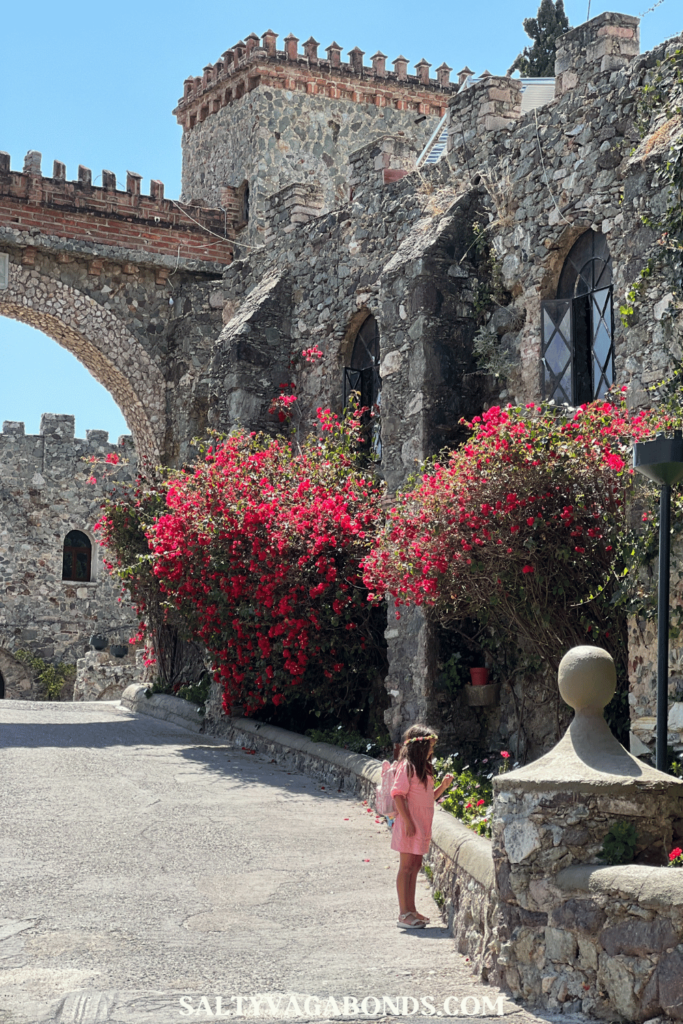
Museum of the Mummies of Guanajuato Museo de las Momias de Guanajuato
On June 23, 1871 they found the first mummified body in the Santa Paula pantheon and later founded the museum. They have just over 100 mummies that occur naturally and are displayed here. Most happen to be buried below where the museum stands today. The mummification happened naturally because the weather and conditions are perfect for this to happen here at this location.
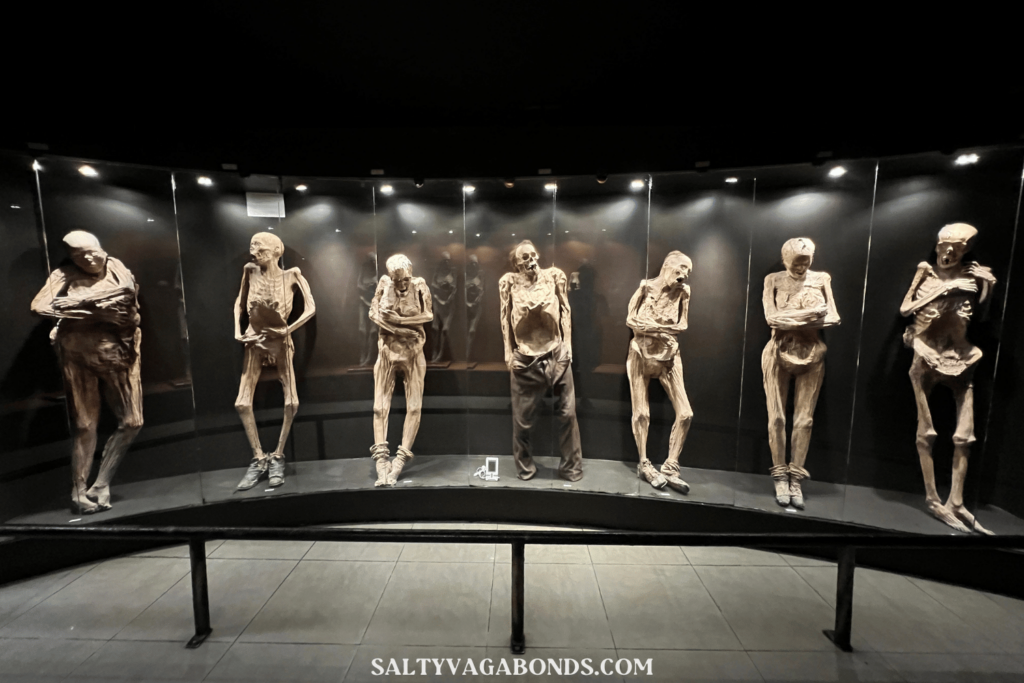
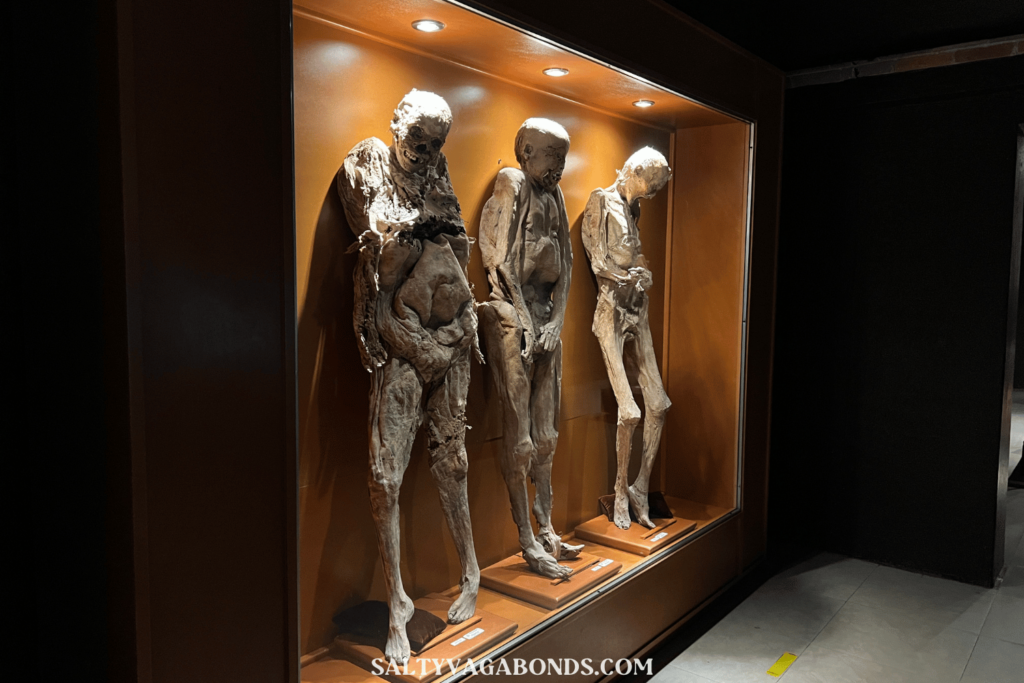
As a family we spent just about 2 hours here reading the information signs and viewing the mummies. The mummies are from 1871 to the mid-19th century. The museum also has one of the smallest mummies in the world. It is a fetus that was mummified inside the mother, that was removed and on display when we visited.
This was a major learning experience for us all. Being able to view the anatomy of a human mummified like this made this trip unique. You can still see the tendons, teeth, and clothing of the person that once lived.
Overall, Guanajuato was one of the most fun trips we have taken throughout central Mexico. The Baroque and neoclassical buildings were very special to witness in person. The area is famous for these structures throughout Latin America. It’s really incredible to experience Mexican history in this way, especially for kids.
Zona Arqueológica de San Felipe-Zirahuato
This pyramid is a hidden gem in central Mexico. We were on our way to see the monarch butterflies and saw the sign for this archaeological site. We arrived at the pyramid midday on Sunday. After we arrived we parked and talked to the caretaker.
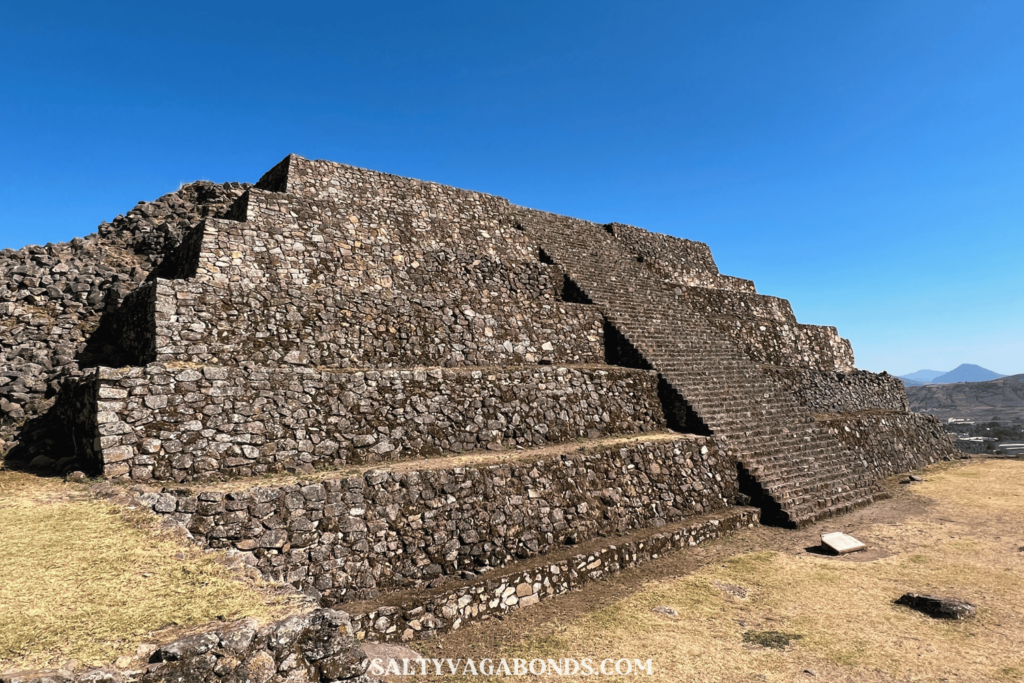
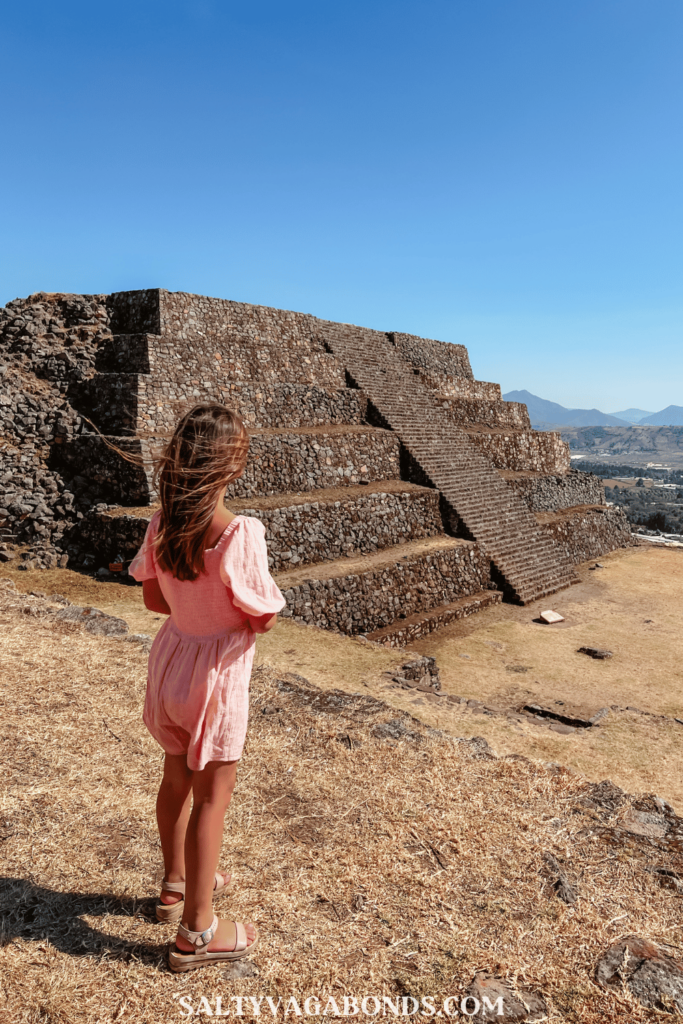
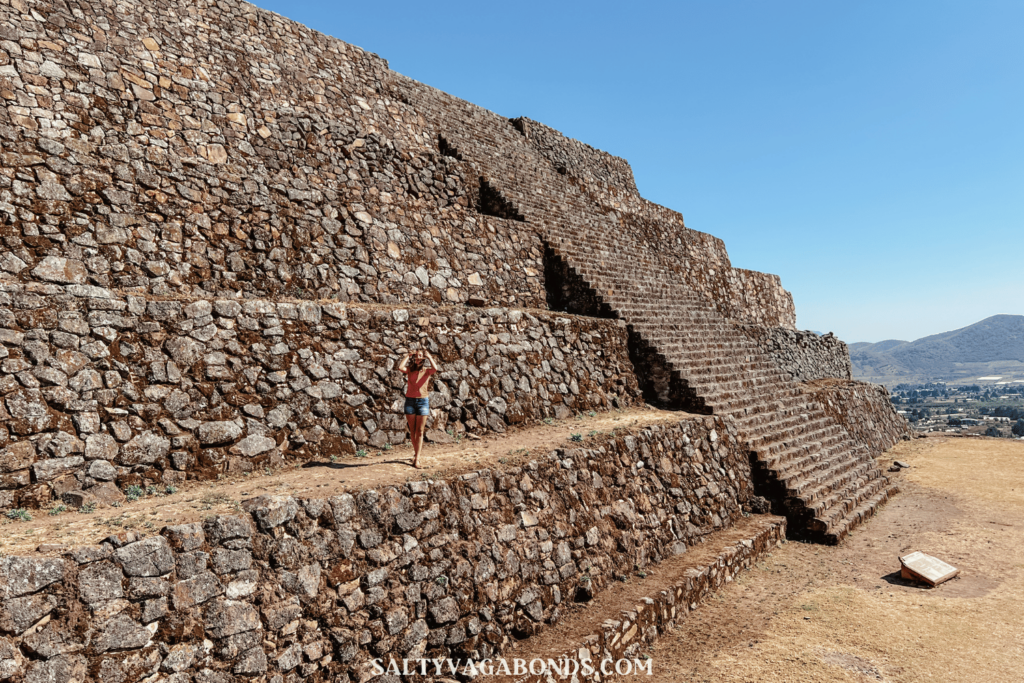
Since it was a Sunday and Amanda’s heritage is from northern Mexico the kind gentleman let her and the kids in for free. This location allowed free entry so the Mexican people can experience their heritage and the Aztec empire here at this pyramid.
This place was a huge archeological site of a past ancient city. It hosts a large pyramid and path down into the valley. The view from the pyramid was outstanding. The location hosted a small museum that hosted arrowheads from the Aztec era.
If you are traveling through Mexico and want a more personal experience I would visit the pyramid at Zirahuato San Felipe. We skipped the more famous pyramids like Chichen Itza, and the great pyramid of cholula also known as the world’s largest pyramid. We skipped them because we wanted a more intimate experience in the Mexico City area. When the time is right though we will be back to check them off our bucket list.
Reserva de la Biósfera Santuario Mariposa Monarca
As a family we loved this location. It was family friendly, fun and an interesting experience. The monarch butterflies come here every winter on the migration from the United States and northern Mexico.
The Monarch Butterfly Biosphere Reserve World Heritage Site is the largest in the world. It is home to 44% of all butterflies arriving in Mexico. The Monarch Reserve is also on the 13th Natural Wonders of Mexico list.
We arrived early in the morning as soon as the park opened. We parked and ate some classic Mexican cuisine for breakfast that was offered there by local vendors. The park opened and we bought our tickets.

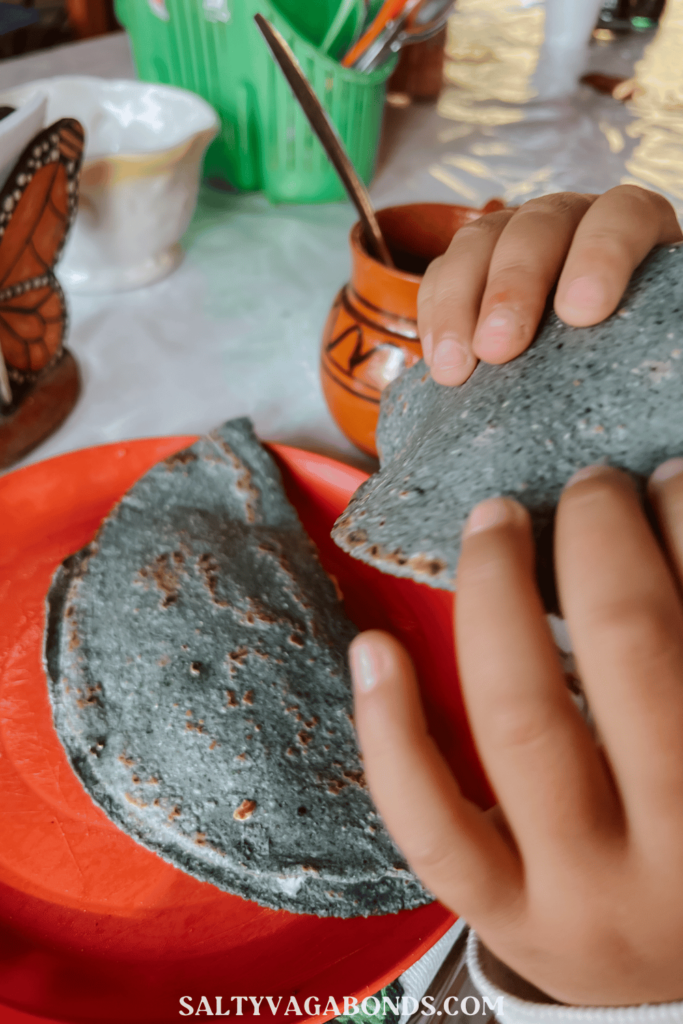
The hike up the hill is pretty brutal so Amanda and the girls paid to ride the horses up the hill on a separate trail. Alex wanted the workout so he took the stairs up. The climb up is not for the weak but is very much doable with breaks. The total elevation gain is around 1,100 feet and about 3 miles round trip. The elevation you begin at is around 9,800 feet above sea level and is all uphill on the way up.
This reserve is a gold mine for seeing and experiencing butterflies. Seeing them in their natural habitat is mind boggling because of the sheer numbers. Once you reach the top they are everywhere, and there are millions. You will not be disappointed if you visit the biosphere during the month of March like we did.
Temazcal at Agua Blanca La Garita
We stayed at this resort while traveling on our trip through Central Mexico. Temazcal has been on my list since our first visit to La Paz when I learned about the experience through a friend we made. When I read temazcal on the list of wellness services I knew we had to embark on this journey.
We had to let them know the day before so the staff could prepare everything and notify the shaman. The staff builds a big fire and they heat the lava stones up all day, a minimum of 8 hours.
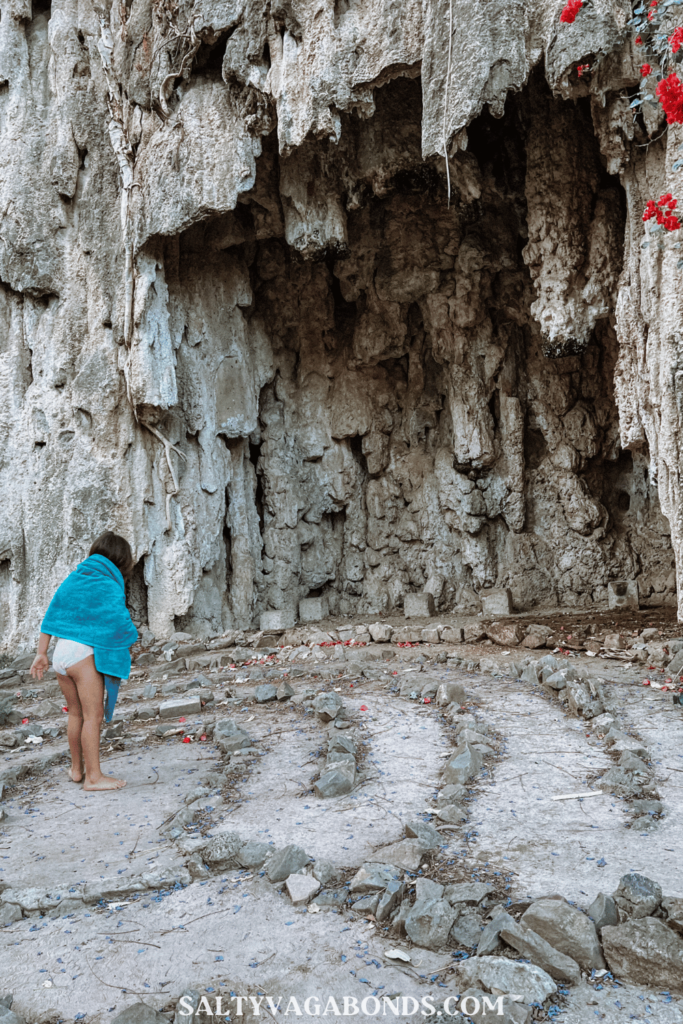
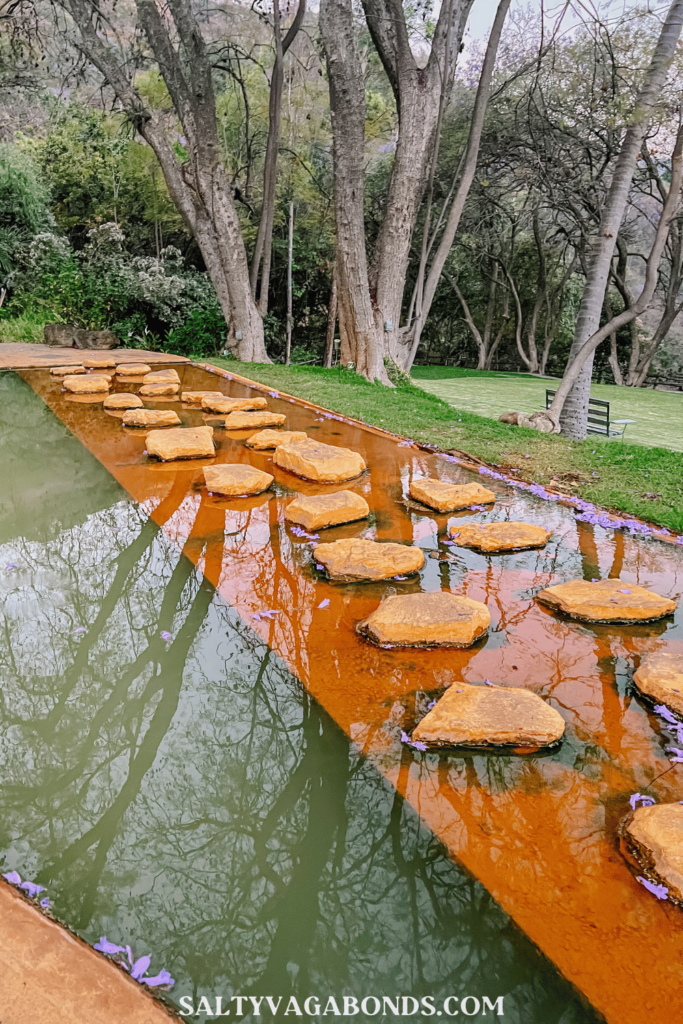
The ritual begins in the afternoon. Upon entering the sweat lodge the shaman performs a blessing upon the participants.The ceremony starts outside the temazcal with a bundle of rosemary, sage and other herbs in a pot of water on the fire. The staff transports the hot stones to inside the sweat lodge.
The door on the structure is small and close to the ground so you have to kneel/crawl in showing homage and respect for the earth. The temazcal is pretty hot and everyone gathers around the rocks in the center and the ceremony begins while under candle light.
The temperature inside the structure is well over 100 degrees fahrenheit. We almost start sweating immediately after the ritual begins. They begin to use the herbs to put water on the rocks creating a humid atmosphere. The oils from the herbs evaporate and cleans your skin, body and soul for the next 90 minutes with many applications to the leaves rocks.
This was one of the most humbling ceremonies I have been apart of. Staying inside the sweat lodge makes you want to give up but the benefits outweigh giving up. This type of crawling out of the sweat lodge symbolizes being born again by Mother Earth.
Baja California has incredible UNESCO Sites
Before we visited Baja California Sur I knew there was some allure but once you see it you’ll understand why everyone says Baja is a hidden gem. Baja is special and is famous for UNESCO World Heritage sites throughout its two states, Baja California and Baja California Sur. The islands and coral reefs are some of the most healthy and diverse oceans we have ever witnessed in North America. The Sea of Cortez is said to be the aquarium of the sea and in our experience it truly is.
Bahía de Loreto
Loreto, nestled in Baja California, enchants with its historic charm against the stunning backdrop of the Sea of Cortez. Known for its tranquil atmosphere, this coastal gem boasts captivating colonial architecture and is a gateway to breathtaking marine life adventures. From its iconic Mission to the allure of water-based activities, Loreto promises a serene escape with a dash of adventure.
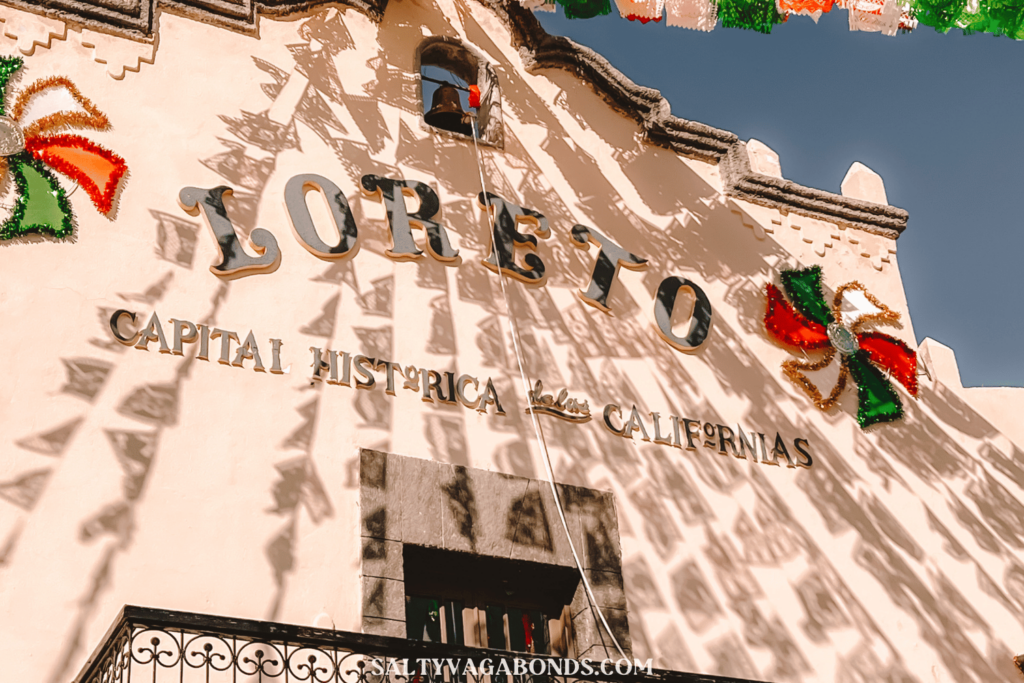

Coronado Island
Coronado Island presents your eyes with beautiful turquoise-blue water as you approach the beach. You can see this color from miles away and it is very noticeable from the space window. We fell in love with the sea lion colony just to the north along with the dolphins that greeted us leaving the bay during our visits here.
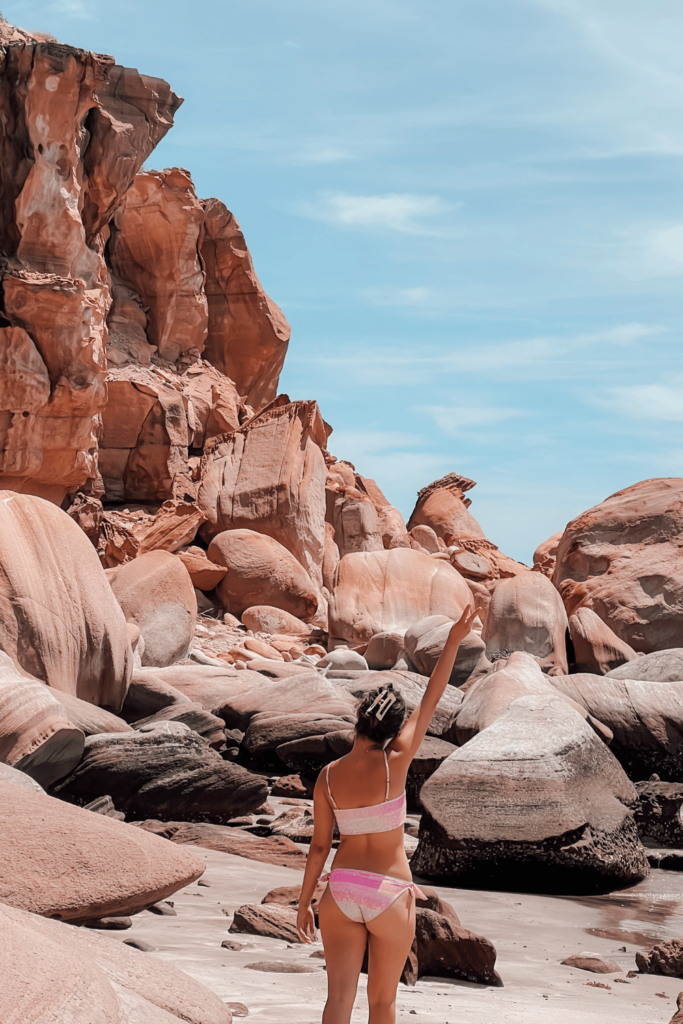

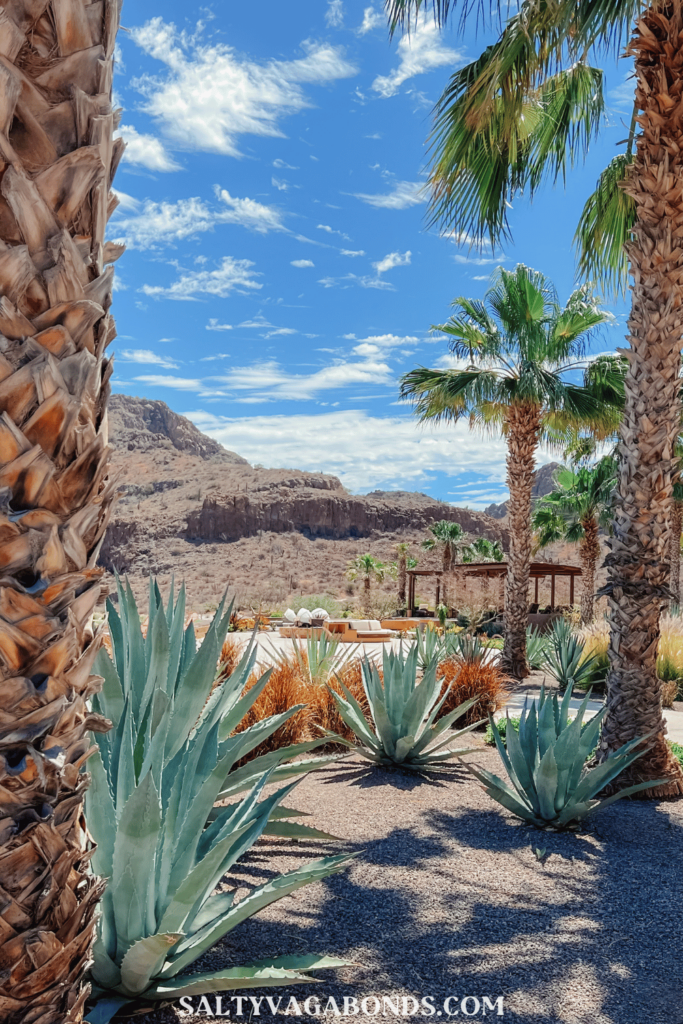
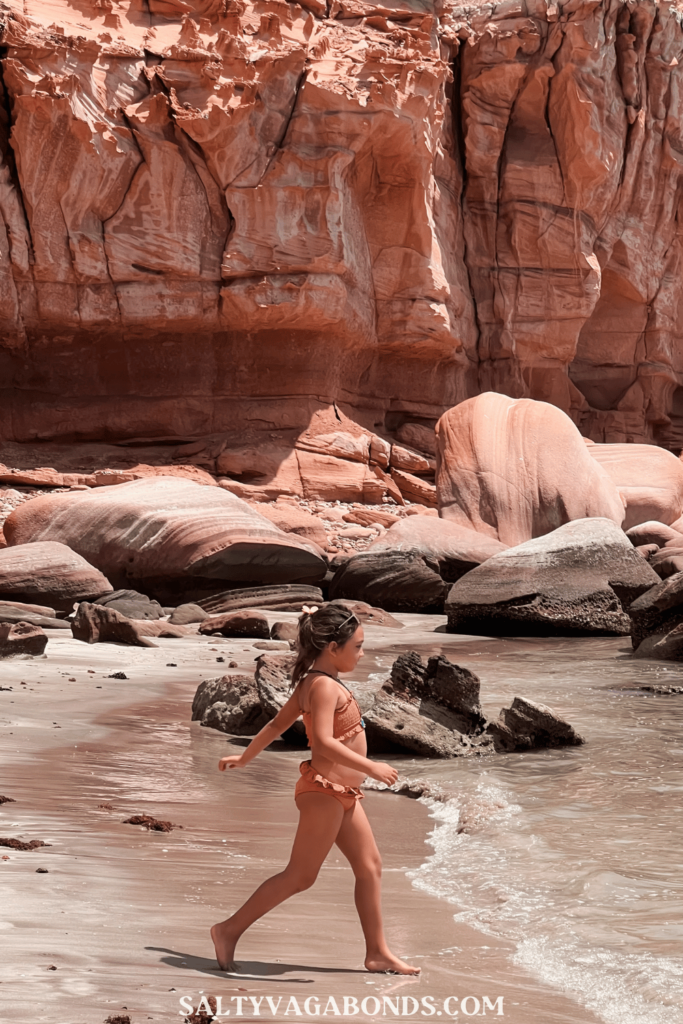
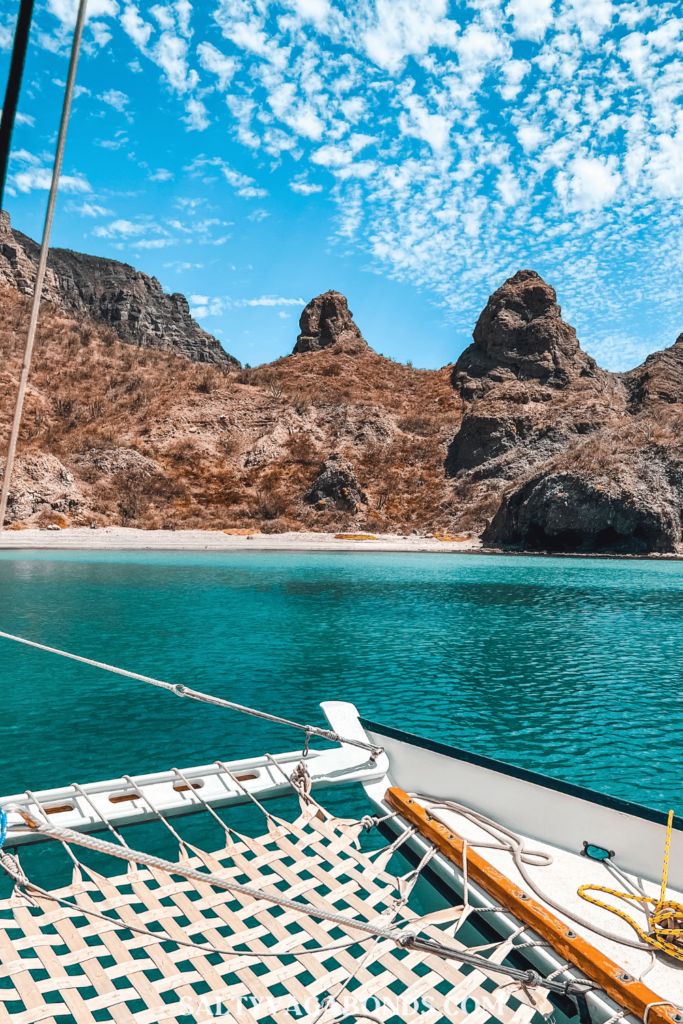

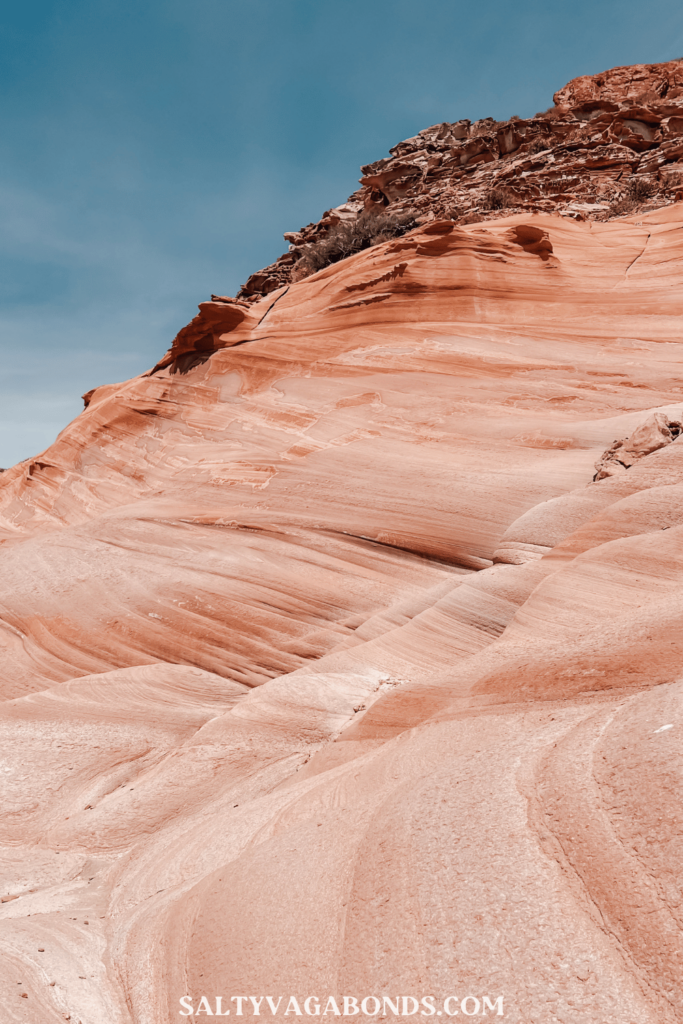
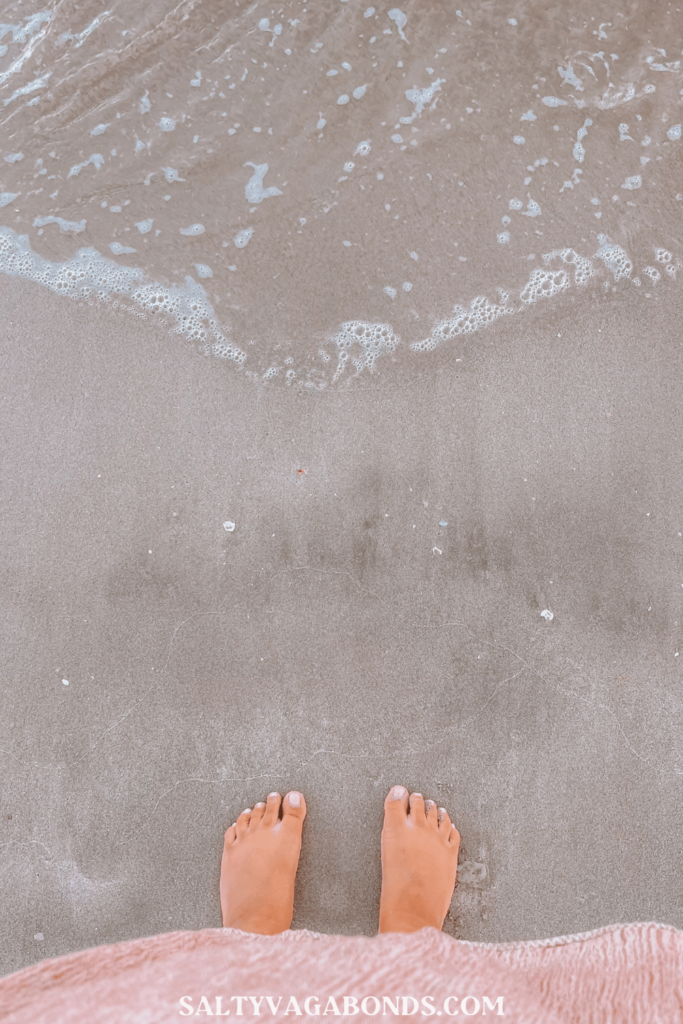
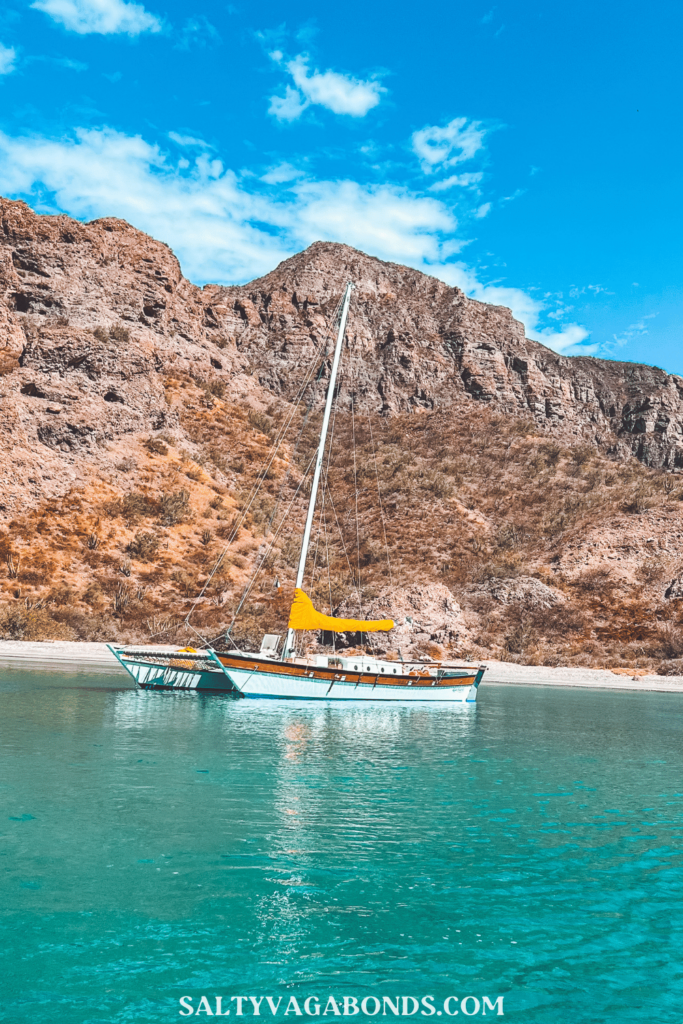
Divorce cove
Divorce Cove is intimate and the beach is full of little pebbles with plenty of driftwood for a beach fire. We were visiting with a friend from La Paz here and we got to be up close and personal with pelicans diving on a very large shad bait ball next to our sailboat. It’s a beautiful location to take a boat charter to. You’ll fall in love with the crystal clear blue water.
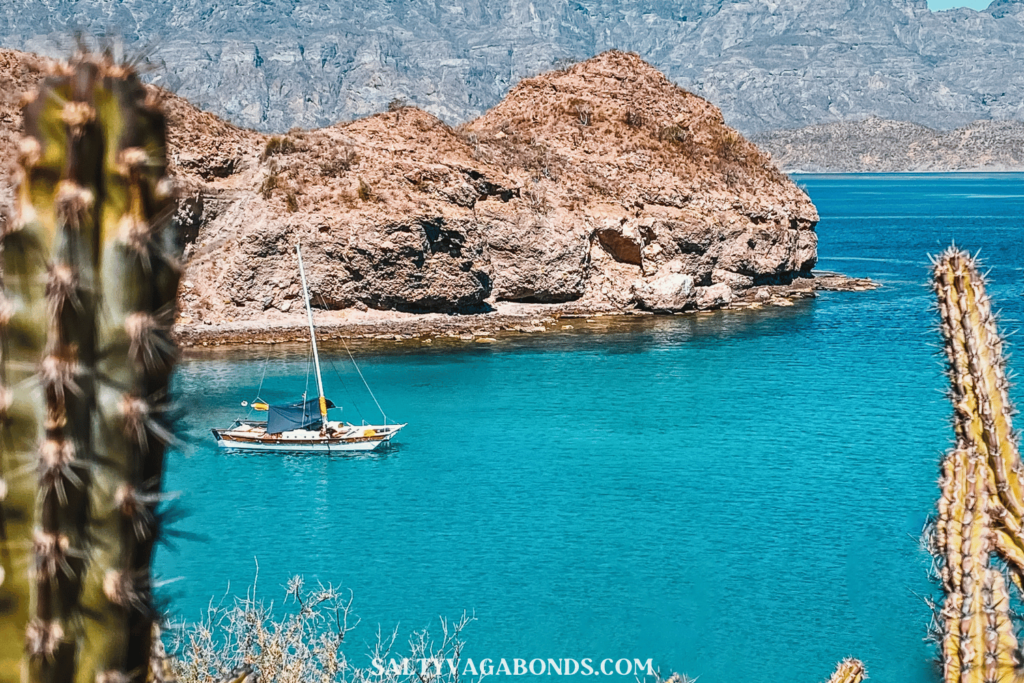
Cabo Pulmo
The Humpback whales and gray whales give birth to their young in Baja during the winter. You will always have a friend on the water here. During our time in Cabo Pulmo, we could hear whales talking through the hull. Cabo Pulmo offers the ability to spend the day snorkeling at the beach. It’s an awesome experience you’ll enjoy too.
Balandra Zone of Ecological Conservation and Community Interest
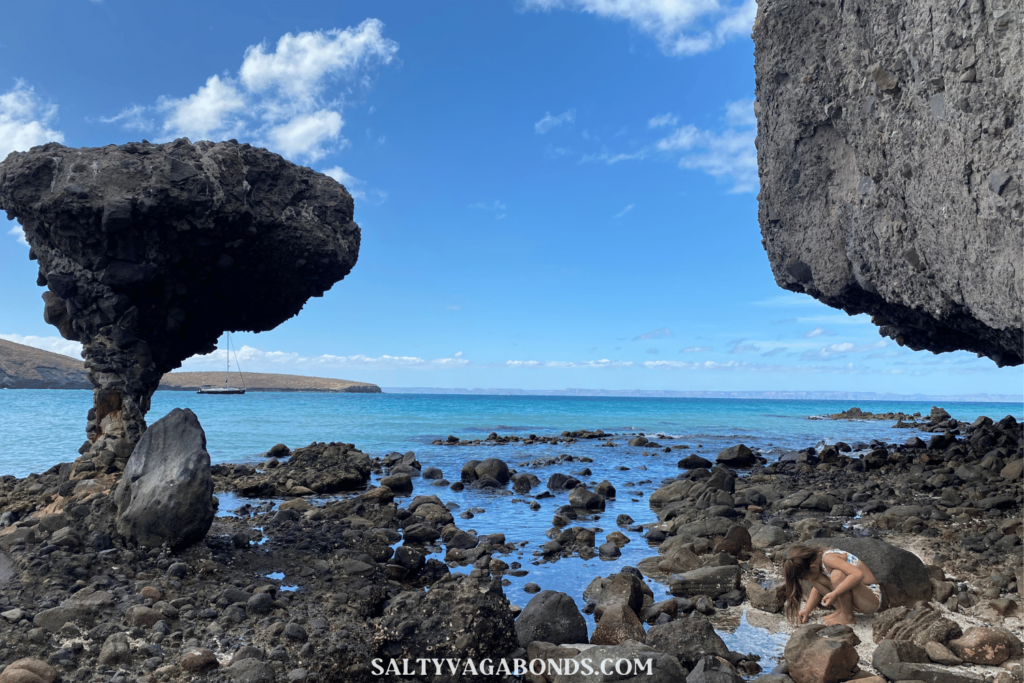
Our favorite beach in La Paz area is the UNESCO Balandra Zone is Playa Gaviotas. This location is over the hill from Pichilingue. It feels remote on a weekday with no other beachgoers. The reef is healthy and the dolphins come into this area too. The white powdery sand is the same from this beach to the famous Balandra beach.
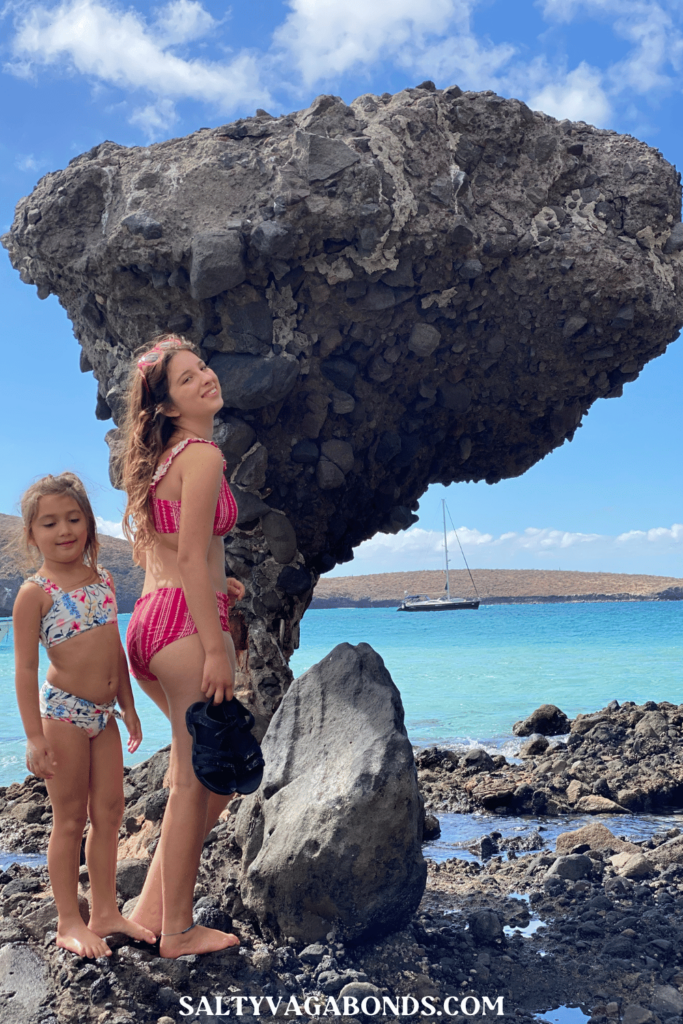
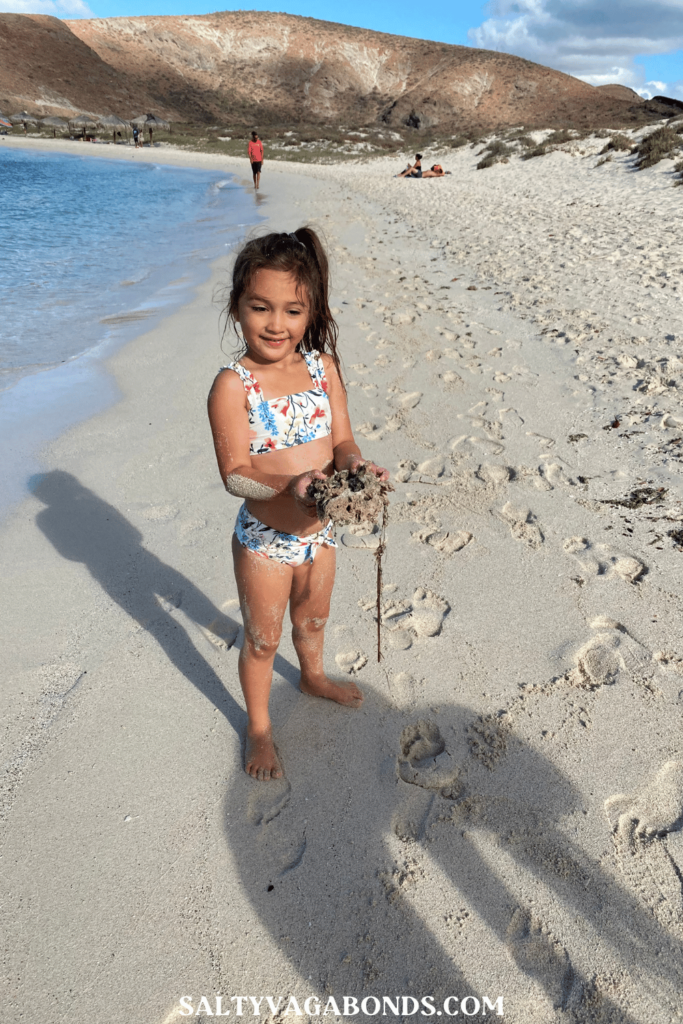
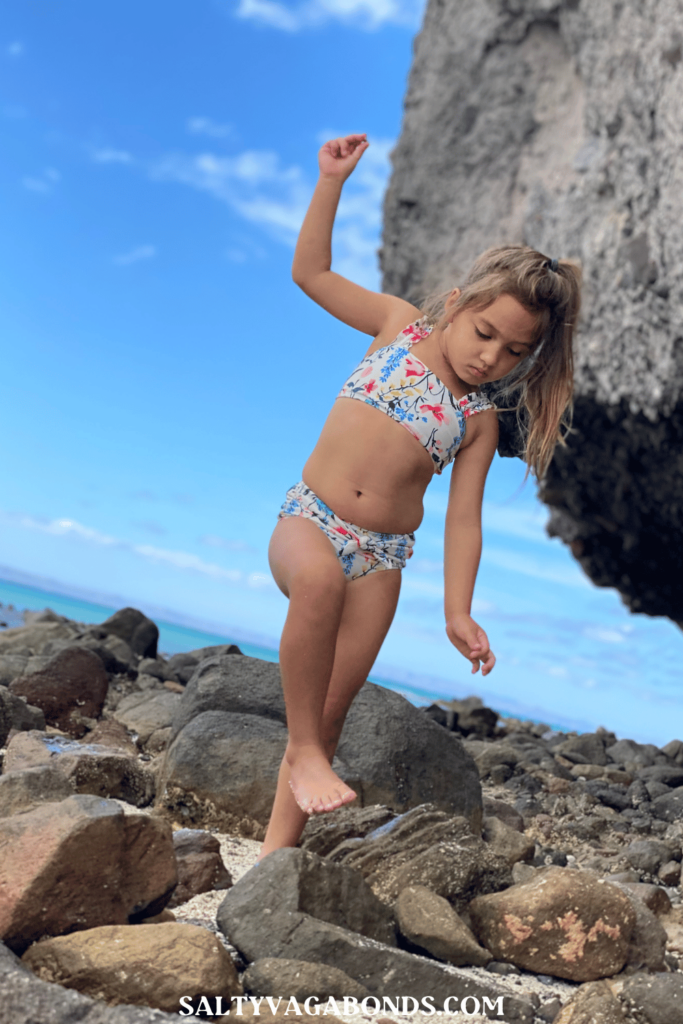
We have spent an extensive amount of time in the Sea of Cortez and the Pacific Ocean. The beautiful beaches will make you forget about work and have you lusting to live in Mexico the rest of your life.
Visiting any of these Unesco sites you can expect to be immersed in sea life. You will experience huge schools of fish, sea turtles, jumping mobius rays, humpback whales, and large pods of dolphins. What makes them interesting is the unknown. Every time we have visited these places we did not know what we were going to encounter.
Museum of Art and History of Guanajuato
The art and history museum was super interesting and a blast. The entry fee was minimal and what we learned about the Guanajuato area was exciting. Corn had a large exhibit and rightfully so.
Corn originated in Central Mexico. When the Spanish Conquistadors showed up on their ships they had never seen this food before. You could say the Spanish speakers helped distribute corn through the rest of the world and we learned this at the museum.
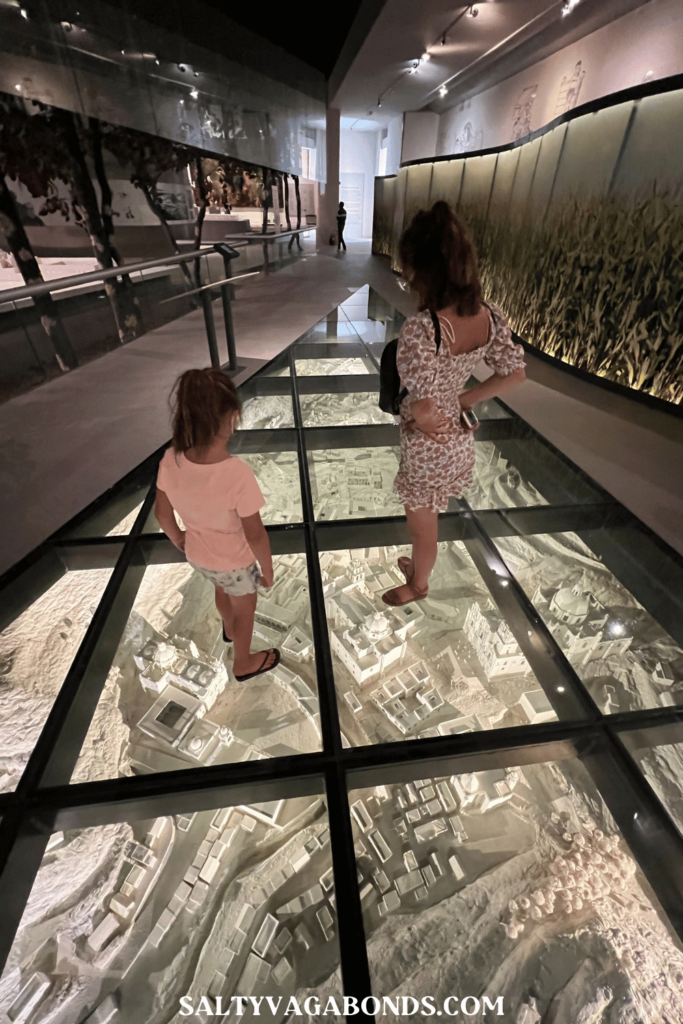
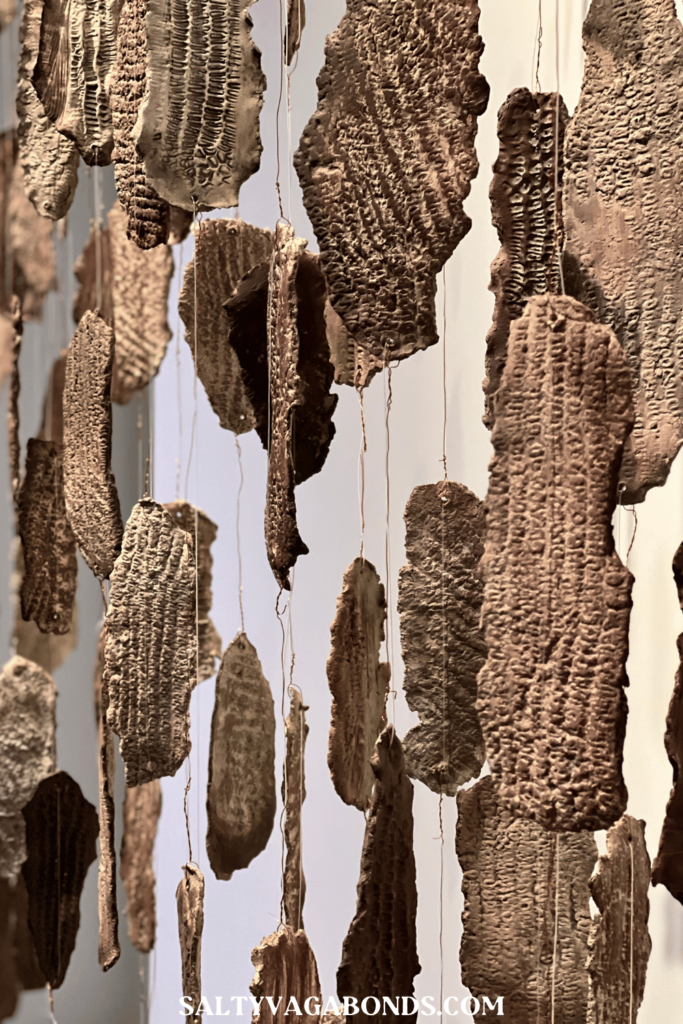

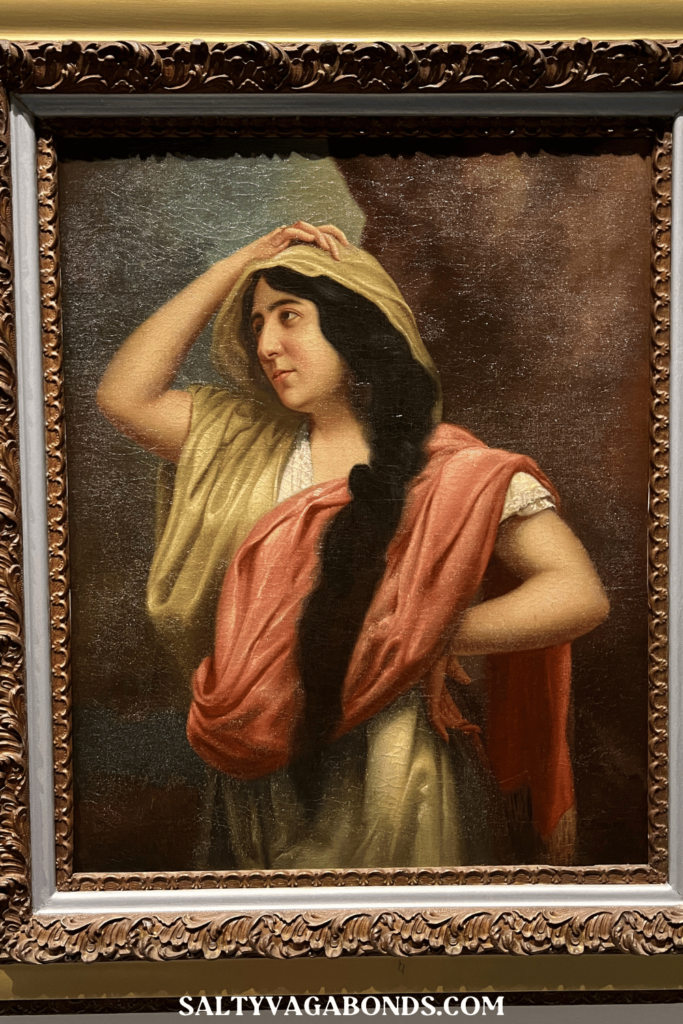
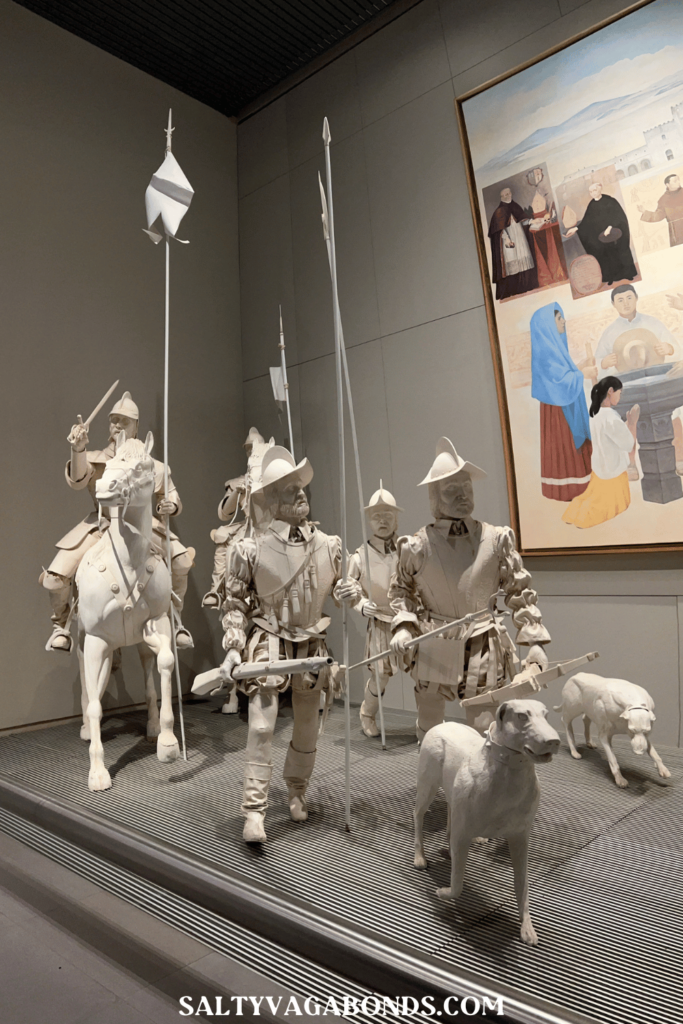
The artwork inside told many tales of life during the Aztecs and how corn was an important food source. They had a full exhibit showcasing different types of corn and what explained the corn kernel structure.
The museum highlighted many types of artwork expressing the rich culture from the Aztec people. The art museum showcased many paintings that highlighted corn stalks and indigenous people as the subject.
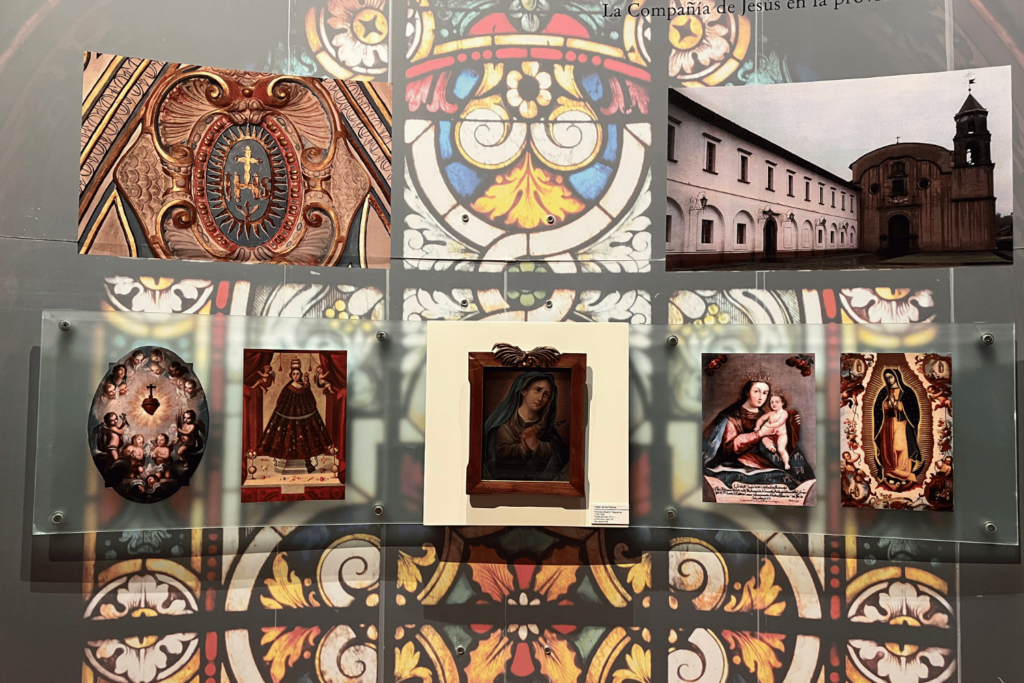
The museum had many artifacts from the Spaniards that arrived and colonized Mexico. They told the history of Christopher Columbus and what Gulf of Mexico ports in which they arrived. They explained the Spanish conquest in great detail.
Other artwork included works from the Renaissance period highlighting art of Mary Magdalene and peasants working. They had a big exhibit for Manuel Felguerez who led the abstract art scene from the post-war era.

We spent about 2 hours or so in the museum. One of the most interesting facts we learned is that corn originated in Mexico and that is why it is a huge ingredient in Mexican food. This museum was a family-friendly location to enjoy art and the history of the local Guanajuato city.
Mexico City
While in Mexico we watched a documentary explaining the meaning of the Mexican flag and the significance of the golden eagle. It’s an interesting story. The design is rooted in the legend that the Aztec people would know where to build their city once they saw an eagle eating a snake on top of a lake. The Aztecs saw this event happen here and this is why Mexico City is located where it is today.
Mexico displays extremely large Mexican flags showcasing the eagle with a snake throughout the city. The informative movie discussed how Mexico was built on Lake Texcoco. Sadly, we did not get to see the lake during our short stay here.
The documentary talks about how Mexico City is the largest and oldest city in Mexico. It has a population of 8.85 million people. Mexico City is the most populous city. It’s huge with people everywhere. If you ever fly in here you’ll be overwhelmed with the housing structure you can view before landing.
Frida Kahlo Museum
On our free day we went to visit the Frida Kahlo museum. We found a place to park and were treated by many other patrons eagerly awaiting to get inside. At this time we learned that you needed to purchase tickets in advance. Unfortunately, they were completely sold out for the day so we didn’t get to check the house out. From the outside though the house was a beautiful blue color and we were sad we could’nt check it out.
Looking back on our trip to the capital city there are so many things we missed. We had other obligations that took us to Tijuana unfortunately. Here’s a few other cool places in Mexico City that are on our list to check out next time if you want to beat us to it.
- House of the first printing press
- Great pyramid of Cholula
- Cuexcomate volcano
grutas de tolantongo
Grutas Tolantongo is famous for the volcanically heated hot pools and grottos. Spring water comes out of the ground in many places on the property. Water test results are displayed in the park if you’re interested in knowing the mineral levels in the water. We stayed two nights in the park at the hotel.
There are two areas in the park. The upper area with the cave has a big waterfall area and tunnel to explore. This area is inside a cave and has a big area to swim. The entrance to the cave you will be crossing the river but they do have a rope like railing to hold onto and the water is not flowing fast enough to sweep you away.

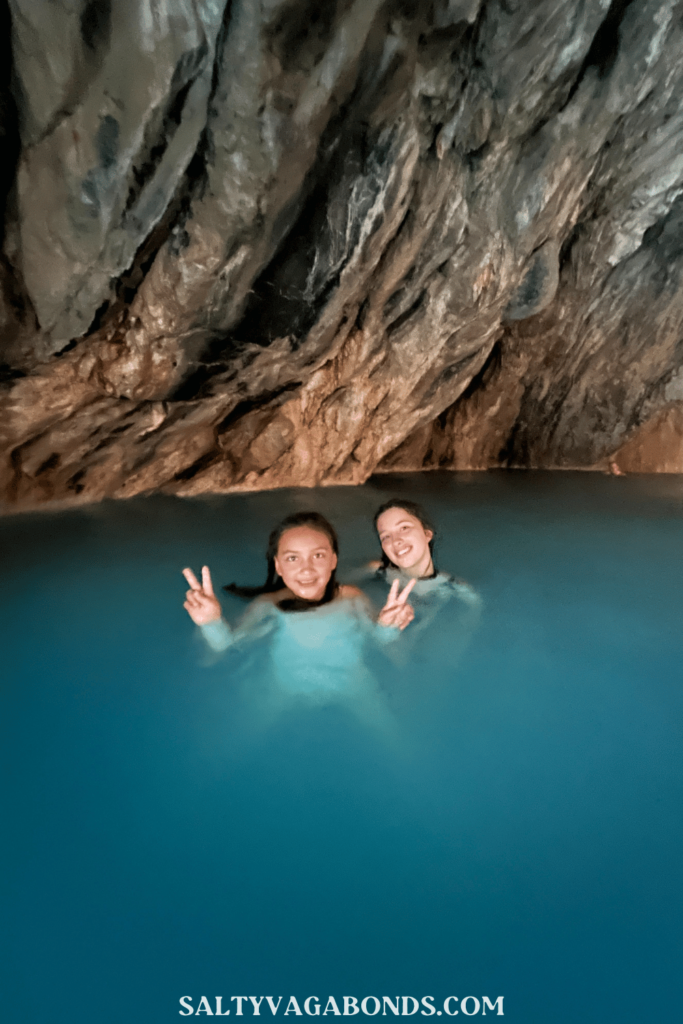
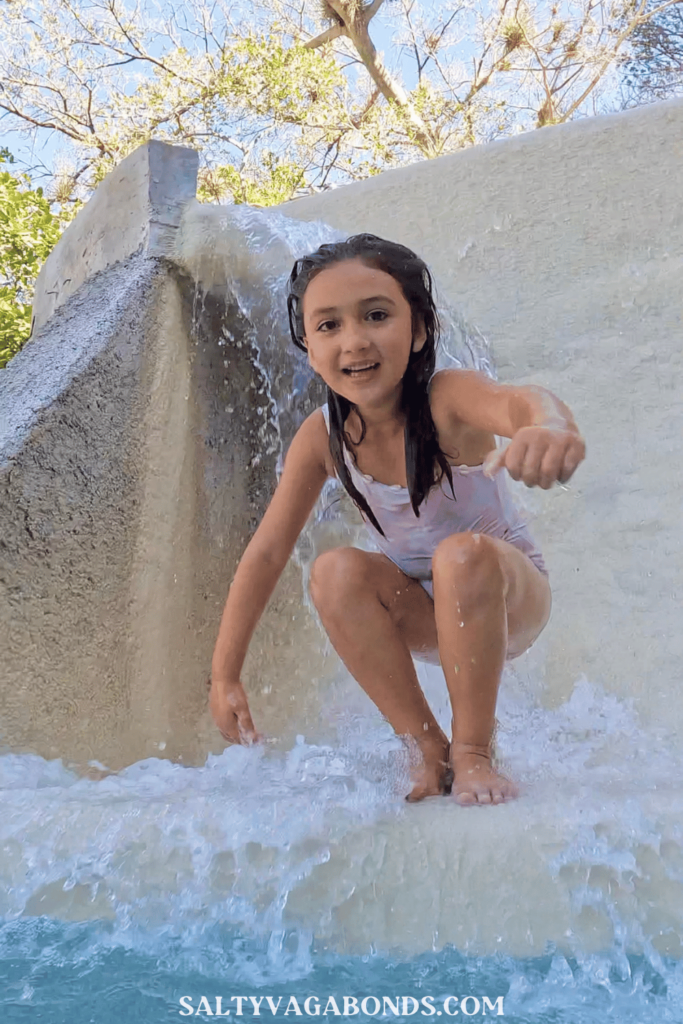
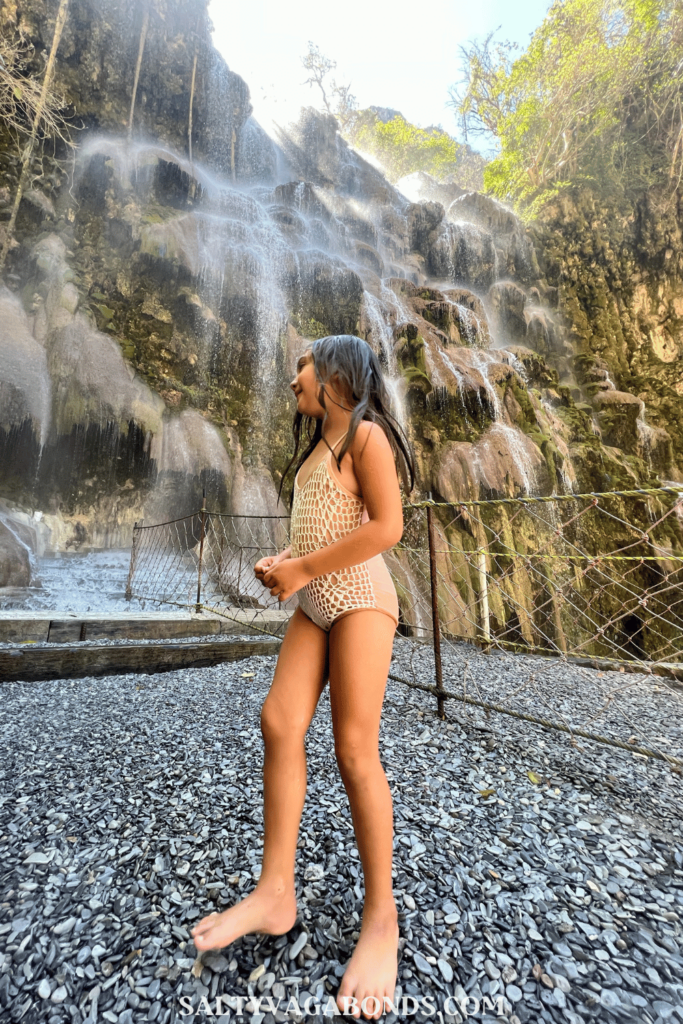

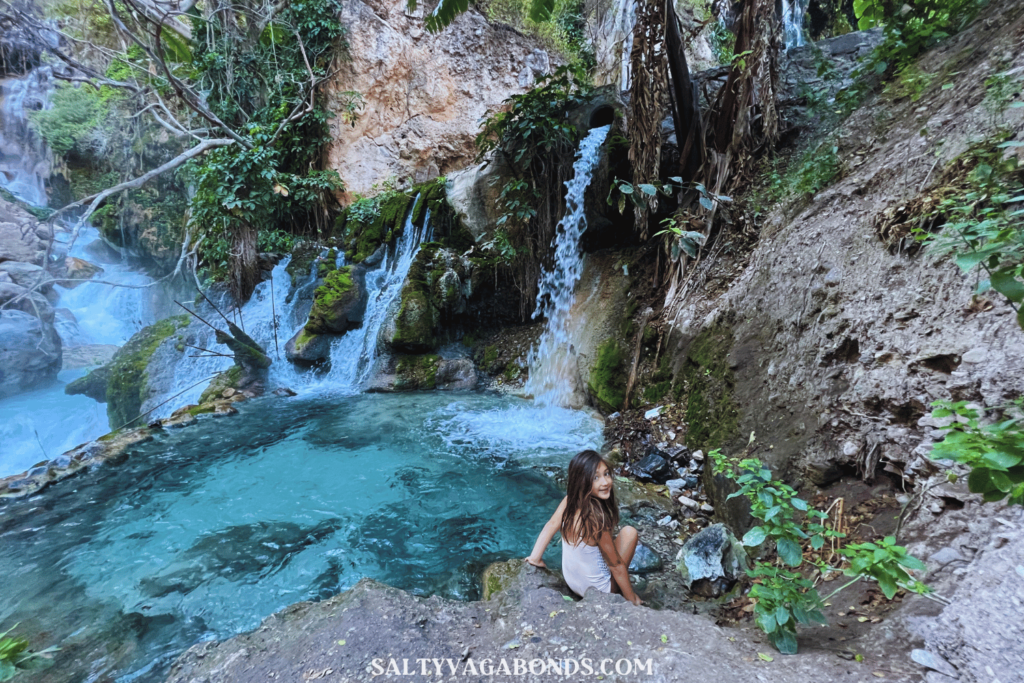
The other area has the instagrammy pools and is closer to the hotel. They do not open the pools until they are done cleaning the pools and filling them with water. They are usually done around noon with the maintenance. There are pools that are accessible before those are opened.
The water temp is about mid 80 degrees Fahrenheit for both locations (the pools and the cave) including the river. This loctation was surreal and an awesome few days enjoying the water and the property. They are cash only so stop at the ATM before you arrive, It is an hour away by car.
We also have plans to visit the Mexican Olmec’s in the Vera Cruz area and venture into southern Mexico including the Oaxaca area because it is the food capital of Mexican cuisine! Stay tuned for those posts and if you have any recommendations on other interesting things about Mexico to add to our list, please send them our way!
Leave a Reply Cancel reply
You must be logged in to post a comment.
Our Story
Message in a
bottle?
Join our Newsletter! We're sharing monthly tips & tricks for travel, discounts & more.
Travel Blogs
About us
Contact
Tips & Tricks
hello@saltyvagabonds.com
Link in Bio
Work With Us
SpaceA Military Flights
Santa Fe Travel Guide
Visit Disney Aulani Hawaii
Family Packing Guide
Our Photography Gear
Plan Your Travel
See you soon!
Planning
Tips
Destinations
Oceania
North America
Europe
Asia
Bali
Japan
Korea
Malaysia
singapore
Thailand
Vietnam
France
U.K.
Germany
Canada
Mexico
usa
French Polynesia
Micronesia
Hawaii
Guam
Indonesia
All Travel Blogs
Destinations
Planning
Tips
Destinations
Travel Tips
Planning
About us
Hotels
via Booking.com
Car Rental
Book a Bus/Train/Transfer
Find Cheap Flights
Get ESIM or SIM Card
Easy Currency Exchange
Book Tours & Attractions
Get Travel Insurance
via Discover Cars
via Skyscanner
via 12Go
via Wise
via Viator
via Visitors Coverage
via SimOptions